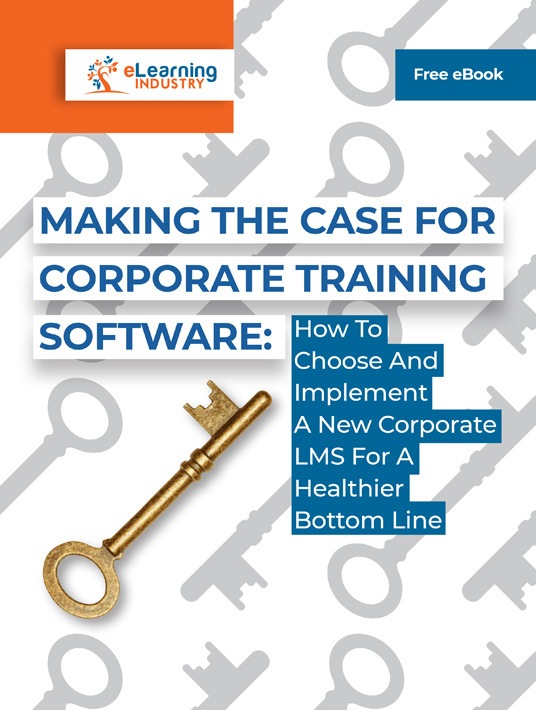Remote Employee Onboarding: Insider Secrets Of Selecting The Best LMS For Corporate Training
Remote workers offer a lot of advantages to your organization but this really depends on the nature of their role. Some off-site workers eliminate the need for office rentals or full-time benefits. Others may actually raise those costs because you have to cater to those needs in addition to your existing expenses. Expats, for example, will still need food and housing plus work permits. Your remote hires could be nomadic freelancers or field-based sales teams. How do you select the right LMS for their onboarding and future training? Here are insider secrets to find the best LMS for corporate training for your remote employee onboarding.

1. Opt For Cloud-Based
The main arguments for server-based vs cloud-based training are control and scalability. Cloud-operated LMS are log-in services run by external parties. This might make them a bit costlier in the long run, because all your tech and infrastructure is outsourced. Resources are -in theory- shared, and exclusive access isn’t guaranteed. On the other hand, you don’t need specialist tools and features to enable distant access. Remote workers can log in from wherever, as long as they have internet. They don’t need things customized for their physical location.
2. Make Mobile-Friendliness A Top Priority
That being said, whether the LMS is cloud-based or native, it still isn't directly attached to the in-office system. Yes, you could have a satellite work-station for your remote team but mobile access is more helpful. This is because the typical remote worker is based at home and telecommutes. The other common category includes non-office workers like sales teams, delivery people, or staff that mostly mingle with clients. They’re consistently on the move, so they need a training tool that goes with them. This makes mobile access the single most crucial element in the search for the best LMS for corporate training.
3. Support Social Learning
New hires can feel isolated at the best of times. They don’t really know anyone yet and their colleagues may be too busy with their own work-loads. They may not have the presence of mind to hold the new employee’s hand unless they’re directly involved in training them. The situation is intensified for remote workers because even when colleagues are willing, they’re not physically present. Social learning helps foster collaboration and cohesion. Your LMS should be linked to social media, allowing your new hire to form casual connections with their new co-workers. Built-in chat rooms and corporate platforms facilitate social contact without compromising corporate security. Get software with a customized intranet portal.
4. Include Interactive Modules
Passive modes of education or entertainment have limited efficacy. Reading fiction or creative-non-fiction engages your mind, inviting you to build mental images. Dry and informative text does not. When training material is dull and drab, spice it up. Build in some kind of active participation to keep corporate learners present. It could be as basic as infinite scrolling, or as complex as branching scenarios. Yanking them out of passivity enhances recall and is helpful for holding their attention in a potentially distracting field-work scenario.
5. Choose A Corporate LMS That Supports Short, Flexible Lessons
Similarly, remote workers don’t always keep 9 to 5 hours, or any kind of regular schedule. The nature of their work isn’t built for it, especially in their first few weeks. Every new hire may have a fast-and-lose schedule when they begin. They haven’t yet been absorbed into the corporate machine. Remote workers may occupy this unstructured space even longer. Keep their training modules short and varied so they can fit them into a busy, amorphous work-day. It’s helpful while they adjust to their new work conditions.
6. Harness The Power Of Multimedia
One of the best ways to do this is via mixed training formats. Audio clips can be consumed in traffic. Videos can be watched in snatches while waiting for meetings and equipment. Simulations are a light and informative way to pass time constructively. Infographics can bring boring chunks of text to life. Give your new hires full control of their multimedia experience, especially on mobile. It should be easy to search, pause, replay or consume content at high speed. Give them good earphones too, with built-in mics for feedback. Lastly, the best LMS for corporate training should support all these interactive and immersive training tools.
7. Verify Its JIT Training Features
All your employees, both new and old, require training on-the-go. It might be a refresher before a compliance test. Or a quick pricing calculation including discounts and rebates. Or advise on closing a particularly stubborn customer. Remote workers need this more than anyone because there aren’t always colleagues they can tap into. Ensure your LMS has keyword-based, light-weight, JIT resources they can access at will, on mobile. It’s a make-or-break tool, both for veterans and novices. And it gives newbies the confidence they need to settle and thrive in their new position. All whilst searching for the best LMS for corporate training.
A good LMS should have tools and features that cut across a variety of employee segments. It should effectively induct new hires, orient temporary contractors and offer non-training functionality. But when you’re specifically focused on new hires based outside the office space, what features should you be looking for? It should be fully usable on mobile and allow social learning modes. Interactivity is important, as is brevity, multimedia, and easy-to-use JIT. New hires have a lot to worry about as they settle in. Help them do it with speed, efficiency, and ease for the benefit of everyone.
Getting new hires into the flow of your work-place is an essential corporate undertaking. How can you be sure you get it right? Download our eBook Making The Case For Corporate Training Software: How To Choose And Implement A New Corporate LMS For A Healthier Bottom Line and discover all you need to know so you can choose and implement a new corporate LMS.









